Beetles
The beetles are in the order Coleoptera, the largest order of insects. Beetles are the most diverse organisms in the world. One out of every four animals is a beetle. All beetles have chewing mouthparts and all develop through complete metamorphosis. Most have the first pair of wings hardened into stiff plates called elytra that protect the softer abdomen and usually a second pair of membranous wings that are used to fly. The elytra always meet in a straight line down the back in beetles. When a beetle flies it usually raises the elytra straight out to the sides and uses the hindwings for actual flight. The beetles are divided into several families based on variety characteristics, many of which require a microscope or a knowledge of insect biology to accurately determine.
The ten groups seen here represent some of the most common beetle families found in Fontenelle Forest and Neale Woods plus a tenth group representing several other common beetle families A brief description of each group is given here to help the observer determine which of the families a particular beetle might belong too. However, only characteristics that can be seen with the naked eye or a magnifying glass are provided. However, visible characteristics are sometimes shared among families.
- The tiger beetles have strong jaws and bulging eyes that make them distinctive. They are usually metallic and colorful in appearance. They are active mostly during the day. The ground beetles in contrast are active mostly at night. They are usually seen scurrying when you turn over a log or stone. Most are black and often shiny and have their antenna inserted between the eyes and jaws. They are usually long legged.
- Scarabs usually are big in size and very diverse in markings. They are oval and elongate in shape.
- The lady beetles are small in size with polka dot patterns on their backs.
- Leaf beetles are usually found on flowers or leaves. They are colorful vegetarians and feed on only one group of plants.
- Fungus beetles include four different families and are usually found around fungi. They are often colorful beetles.
- Net winged beetles usually have a raised net like pattern of veins on their soft wing covers. Most are brightly colored.
- Fireflies or lightning bugs are flattened with a soft body and with parallel sides and both ends rounded. The antenna is threadlike or saw toothed. Often 1 or 2 abdominal segments are luminescent. Most are brown or black with light markings. They range in size from 1/5 to 4/5 of an inch long.
- Soldier beetles or leatherwings are abundant on flowers and foliage. They fly well and are valuable pollinators. They resemble many other beetle families which in turn mimic them. They usually have a long body that is soft and somewhat flattened. The legs and antenna are long and slender and threadlike, saw-toothed or comb like.
- Long horn beetles as their name implies have long antenna (ranging from ½ body length to a little past the body length). The body is robust and broad shouldered. The eyes are notched with the antenna inserted into the notch. The body is usually around an inch long.
- Click beetles are elongate narrow is shape and parallel sided. Each end of the body is rounded with pointed elytra. They are usually brown or black with light markings. Adults are well known for their ability to click.
- Stag beetles get their name from the fact that males of some species have extended antler-like mandibles used to fight over females. Many tropical ones are gigantic but around here they range from small to large in size.
- Passalid beetles have an elongate body that is nearly parallel sided. They range in size from 1 1/8 to 1 5/8 inches long. They are black and shiny. Their elytra have lengthwise grooves.
- Carrion beetles are usually seen on freshly killed animals. They are black often with red, yellow or orange markings on the elytra or pronotum (part of the thorax). The antenna are clubbed and these beetles range in size up to 1 ¾ inch long.
- Rove beetles are sleek and snakelike. They generally are recognized by their short wing covers, which leave much of the abdomen exposed.
- The weevils have a prolonged snout that is well developed broad, flat, elongate and narrow. The antenna is short and elbowed. Weevils range in size from 2/5 to 1 3/8 inch long.
Disclaimer: The content of NatureSearch is provided by dedicated volunteer Naturalists of Fontenelle Forest who strive to provide the most accurate information available. Contributors of the images retain their copyrights. The point of contact for this page is: Eric Scholar.
-
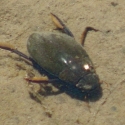 Aquatic Beetles
Aquatic Beetles
-
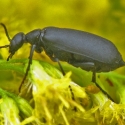 Blister Beetles / False Blister Beetles
Blister Beetles / False Blister Beetles
-
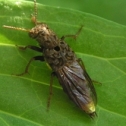 Carrion / Rove Beetles
Carrion / Rove Beetles
-
 Click / Stag / Passalid Beetles
Click / Stag / Passalid Beetles
-
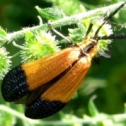 Fungus / Net-winged Beetles
Fungus / Net-winged Beetles
-
 Lady / Leaf Beetles
Lady / Leaf Beetles
-
 Long-horned Beetles
Long-horned Beetles
-
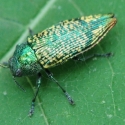 Metallic Wood Boring Beetles
Metallic Wood Boring Beetles
-
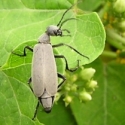 Other Beetles
Other Beetles
-
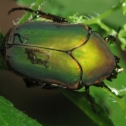 Scarabs
Scarabs
-
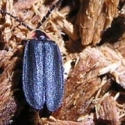 Soldier Beetles / Fireflies / Firecolored beetles
Soldier Beetles / Fireflies / Firecolored beetles
-
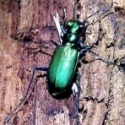 Tiger / Ground Beetles
Tiger / Ground Beetles
-
 Weevils
Weevils
